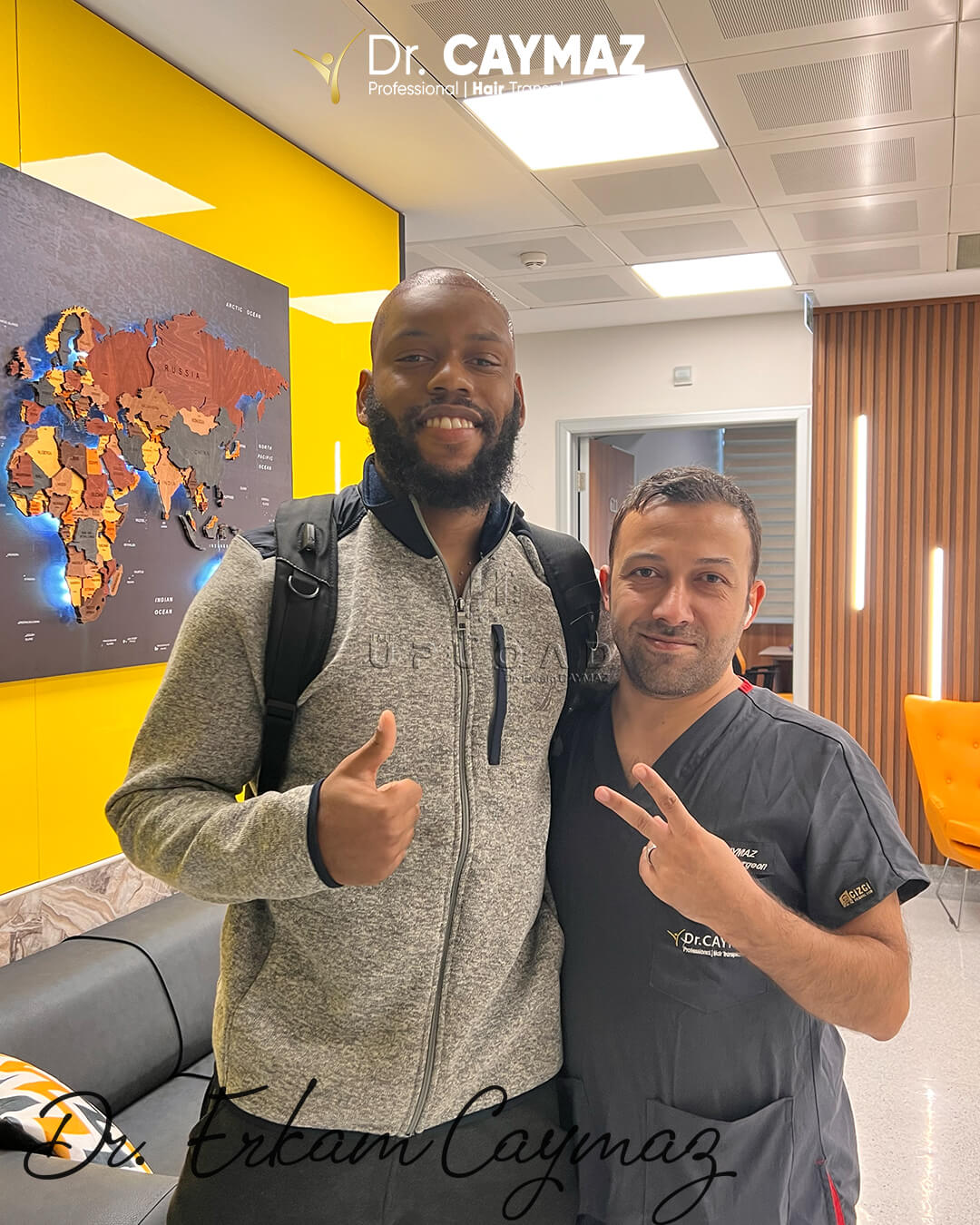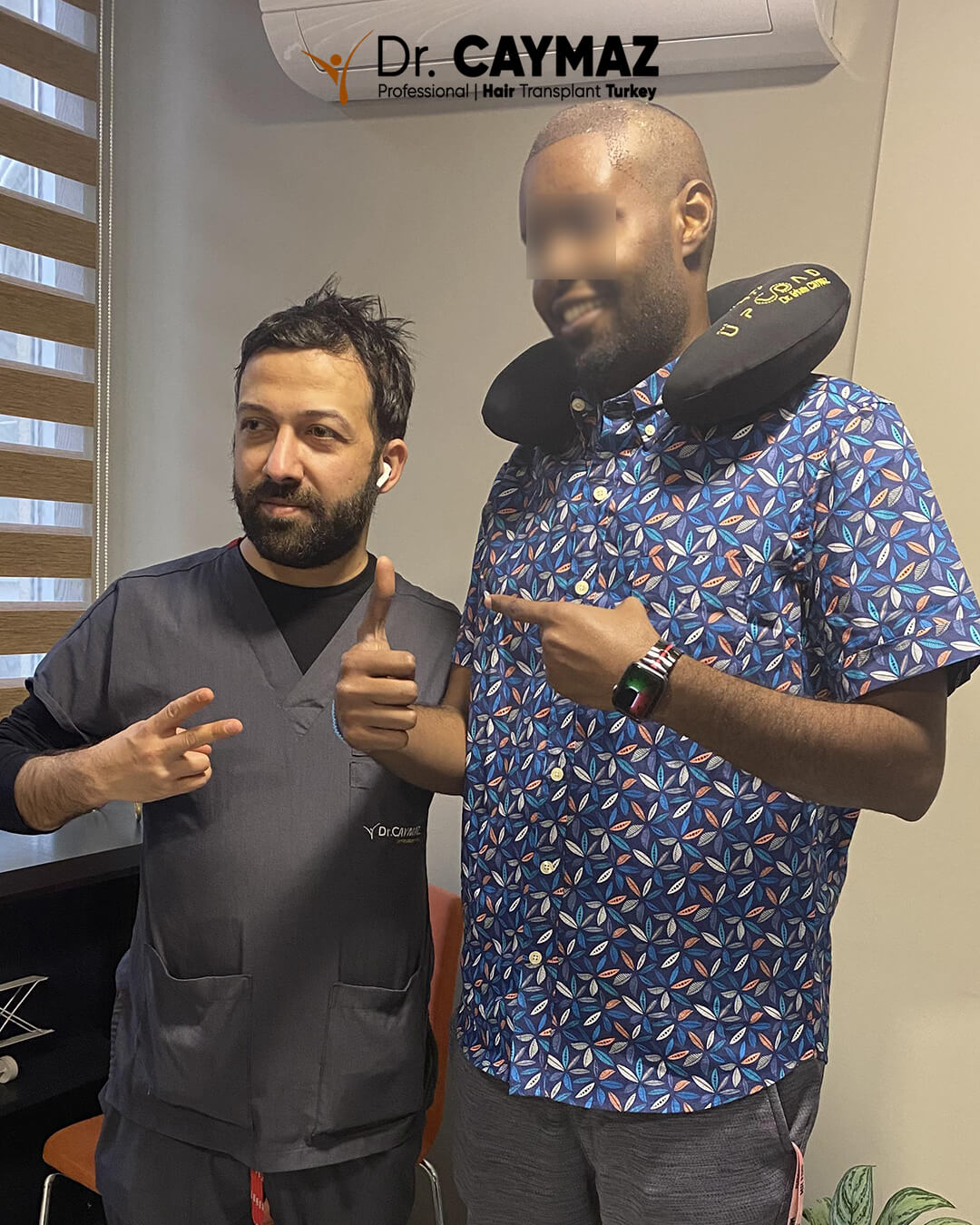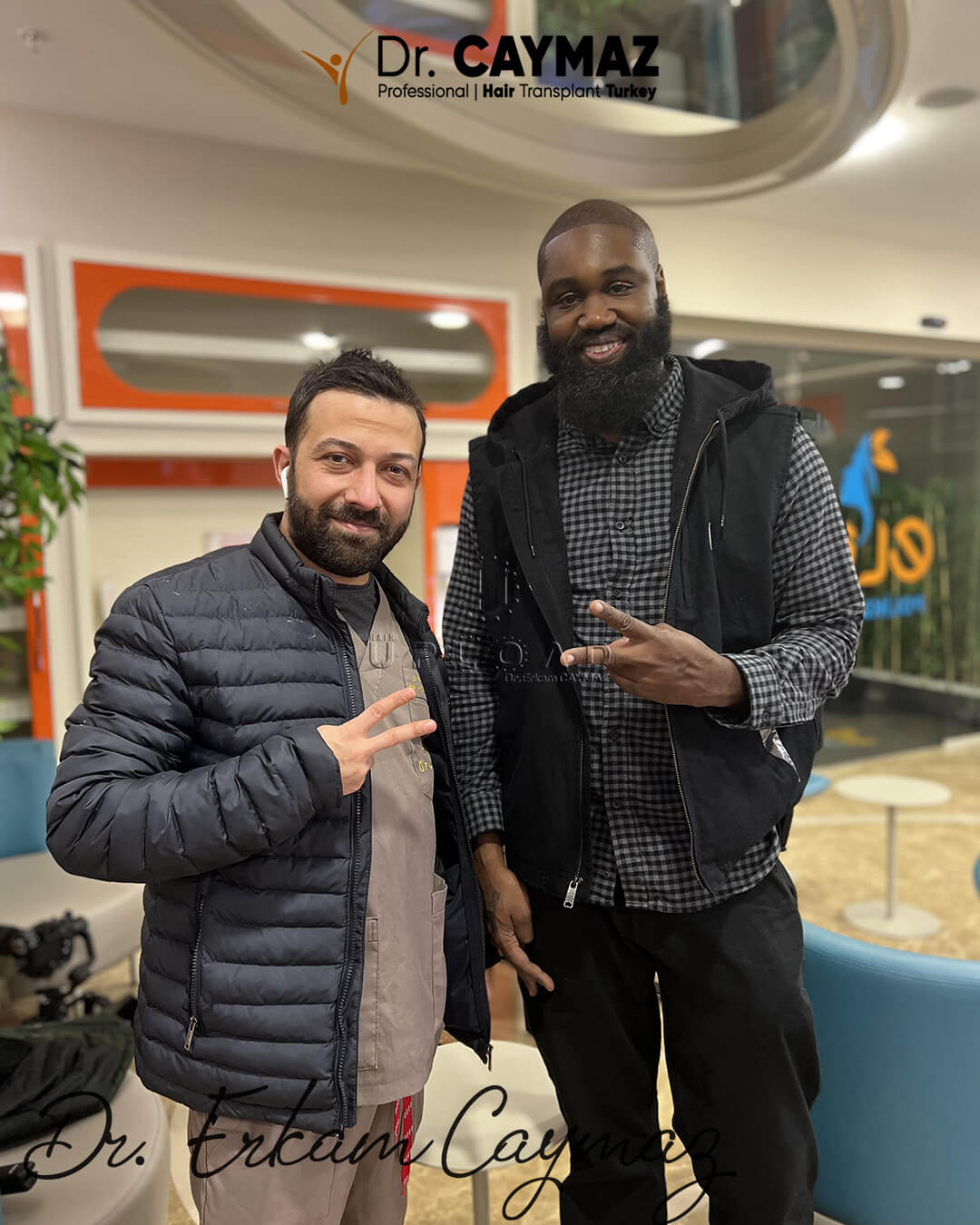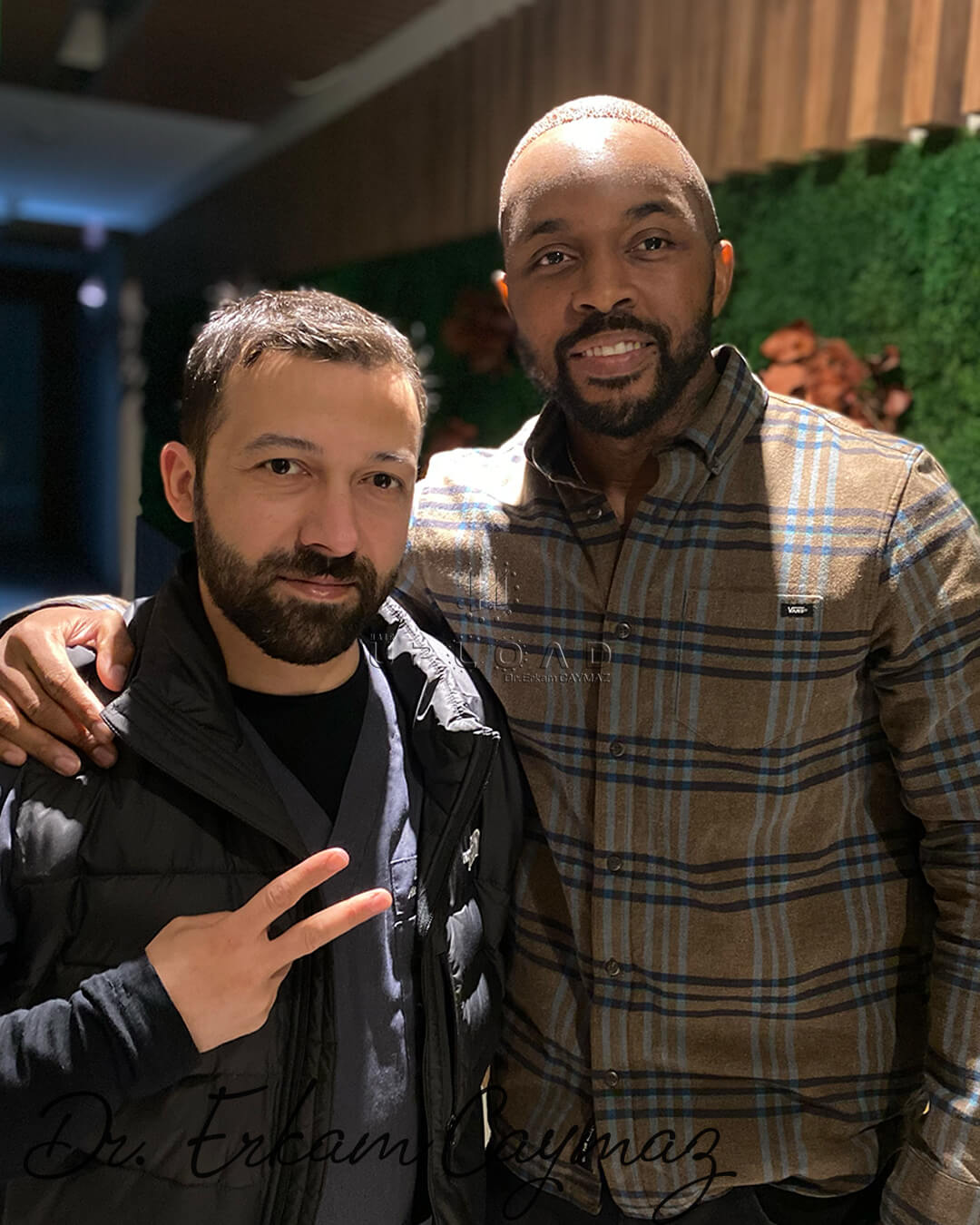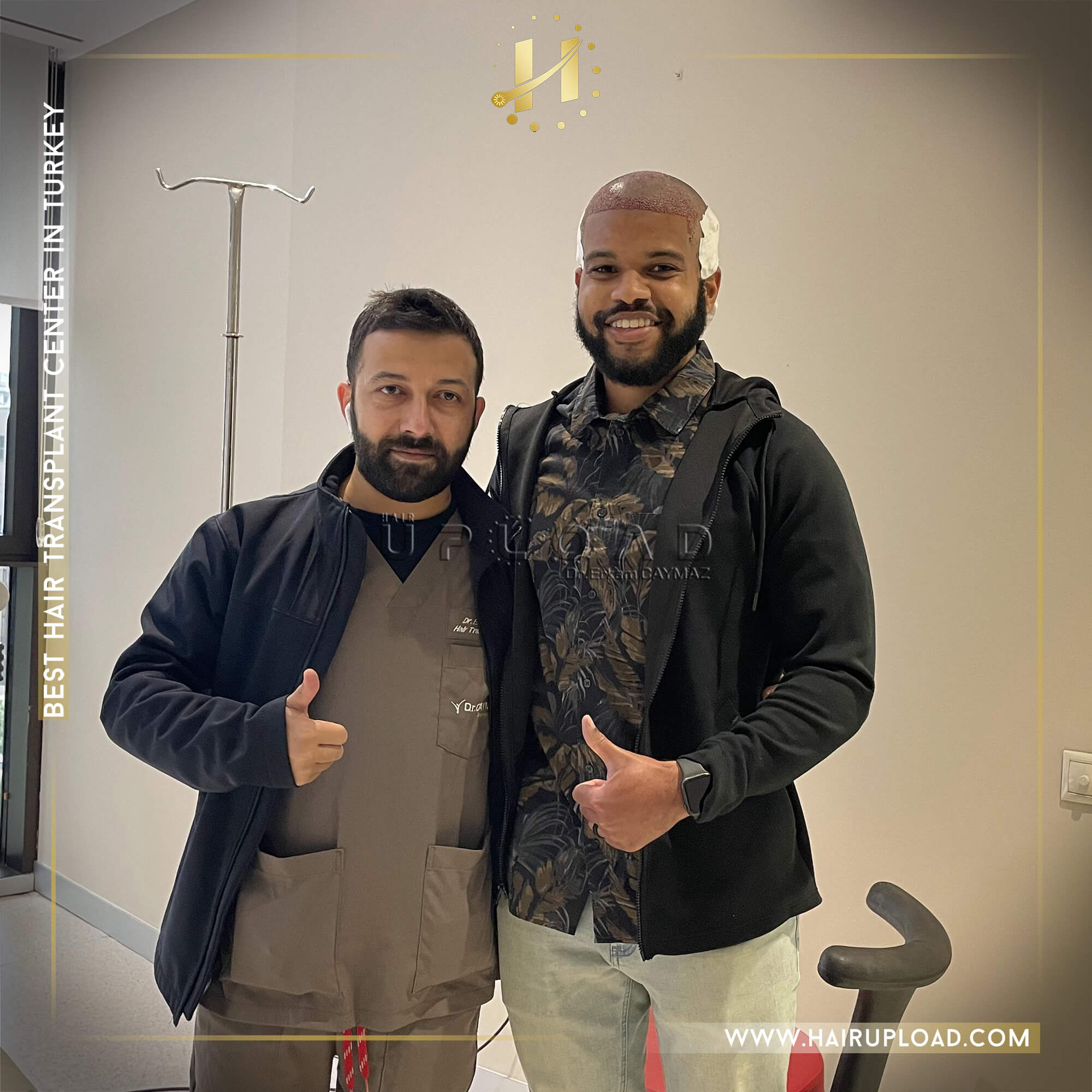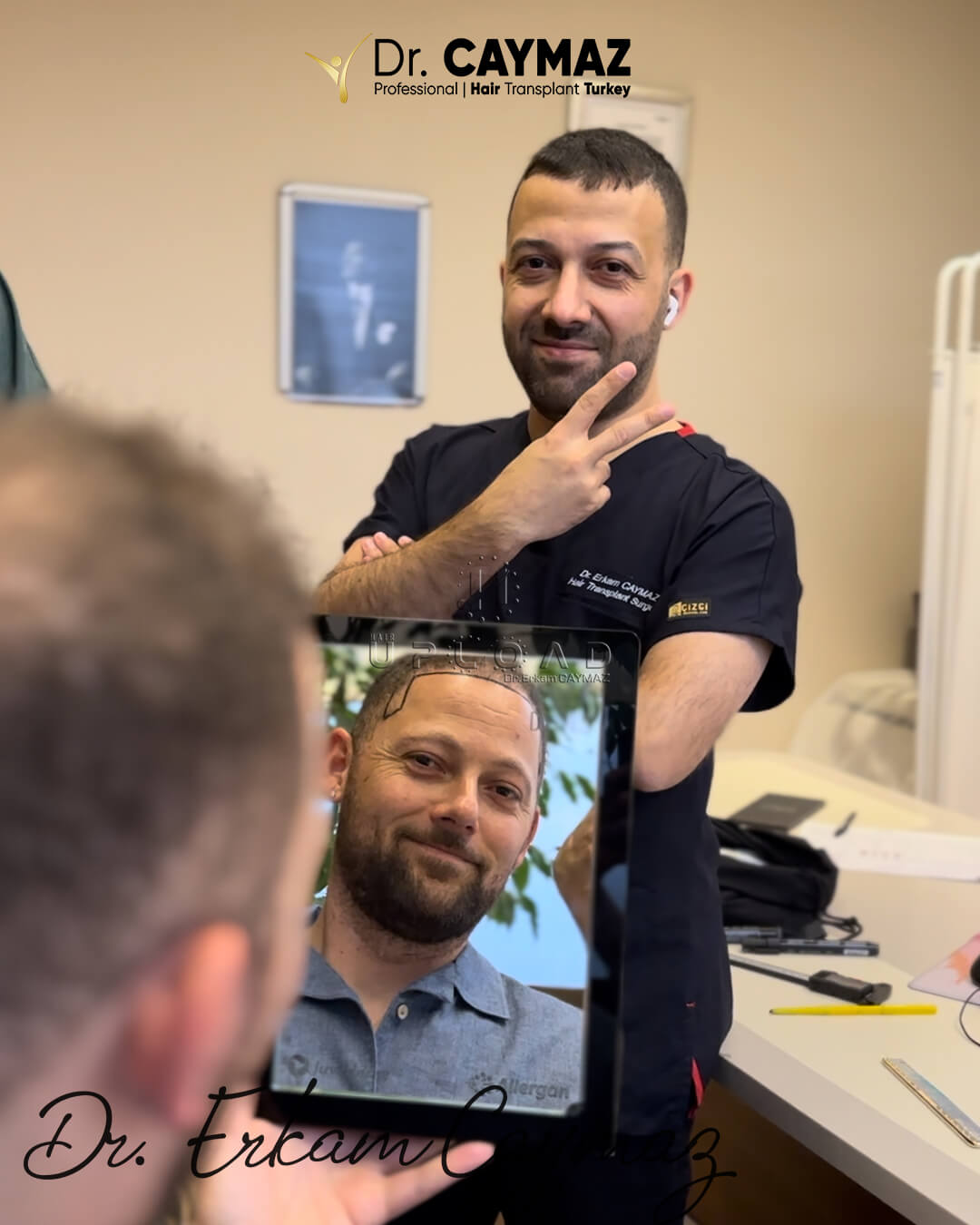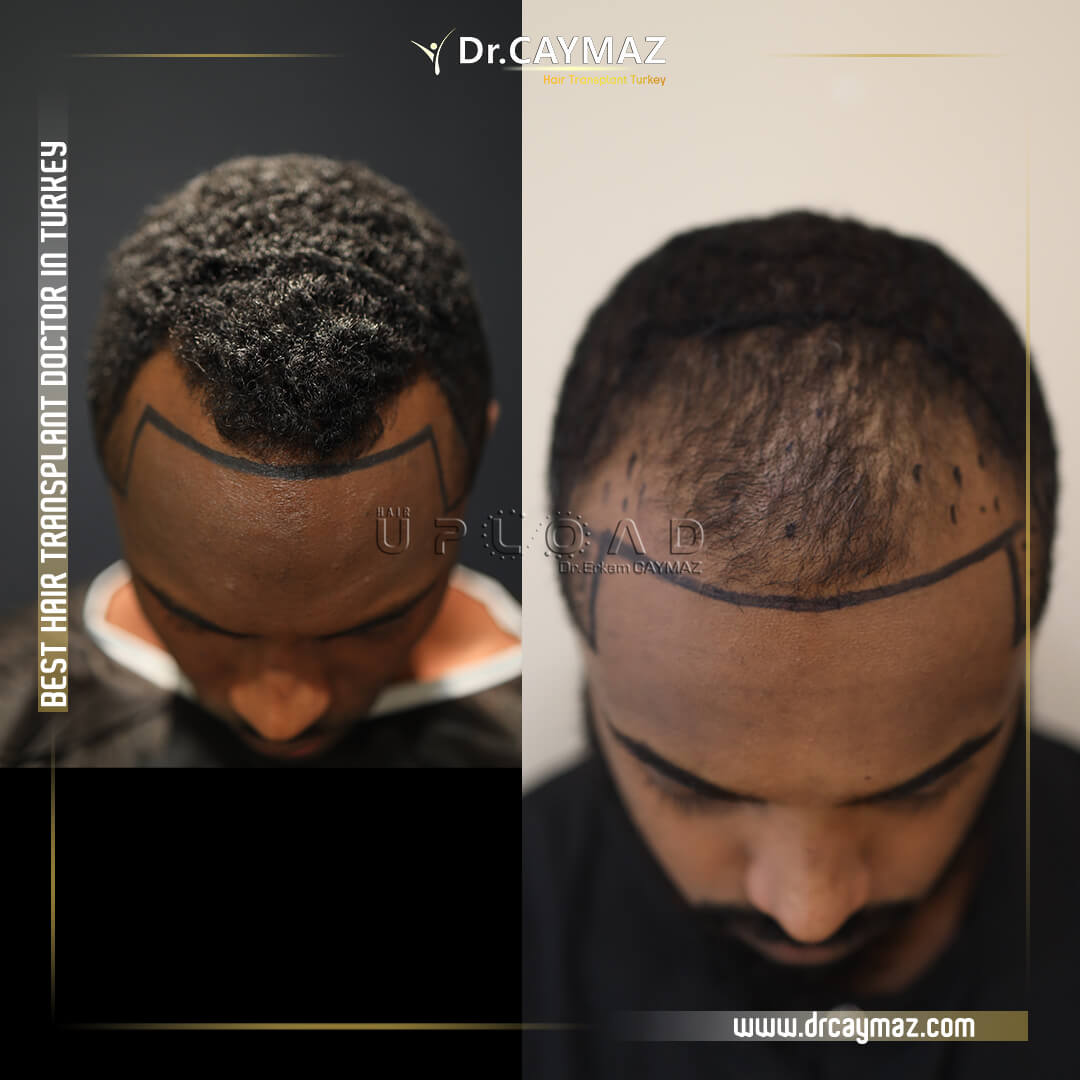Black Male & Female Hair Transplant Before After
Do Hair Transplants Work for Black Men and Women?
Hair transplant procedures can be effective for both black men and women, just as they are for individuals of other ethnicities. Hair transplantation involves removing hair follicles from one part of the body (usually the back or sides of the scalp, which are typically resistant to balding) and transplanting them into areas where hair loss or thinning has occurred. The procedure itself is performed by a skilled surgeon and requires precision and expertise. Afro-hair transplants are starting to draw an afro type hairline.
When it comes to black men and women, there are a few factors that should be taken into consideration. One is the unique texture and curl pattern of black hair, which can affect the transplantation process. Surgeons who specialize in hair restoration for individuals with Afro-textured hair need to have a deep understanding of this hair type to ensure successful outcomes. This expertise allows them to address the specific challenges associated with harvesting, handling, and implanting the hair grafts. Another factor is the natural appearance of the transplanted hair. For black individuals, it is important to carefully match the hair characteristics, such as curl pattern and thickness, to ensure a seamless blend with the existing hair.
Overall, hair transplant procedures can indeed be effective for black men and women. However, it is crucial to consult with a skilled and experienced surgeon who has expertise in working with Afro-textured hair. With proper planning, technique, and attention to detail, hair transplantation can provide natural-looking results and help individuals regain confidence in their appearance.
Afro Hair Transplant in Turkey
When it comes to Afro hair transplants in Turkey, specialized clinics cater to the unique needs of individuals with Afro-textured hair. Hair Upload Clinic has gained recognition as a top destination in Turkey for hair transplant procedures, and surgeons in the Hair Upload Clinic have developed expertise in working with different hair textures, including Afro hair. These skilled professionals understand the specific challenges and intricacies involved in Afro hair transplants, such as the curly or coiled nature of the hair. By employing advanced techniques and paying attention to meticulous details, they are able to achieve natural-looking results that seamlessly blend with the patient’s existing hair. Afro hair transplant procedures in Turkey have attracted patients from around the world, seeking effective solutions for their Afro hair loss concerns.
Happy Afro Patients All Around the World
How long do hair transplant take to grow?
It takes 10-12 Months. If you want to best result you are right place in Hair Upload Clinic. Hair Upload Clinic is best result for afro textured hair transplantation. You will see lots of best result above.
Hair transplant prices can vary depending on various factors such as the location, the clinic or surgeon’s reputation, the technique used, and the extent of the procedure. However, I can provide you with a general idea of hair transplant prices.
In general, hair transplant procedures are priced per graft, which refers to each individual hair follicle that is transplanted. The cost per graft can range from around $2 to $10 or more, depending on the factors mentioned above.
The total cost of a hair transplant procedure is determined by the number of grafts needed to achieve the desired results. The number of grafts required depends on the extent of hair loss and the goals of the patient. On average, hair transplant procedures can involve anywhere from 1,000 to 4,000 grafts or more.
To give you a rough estimate, a hair transplant procedure in the United States can cost between $4,000 and $15,000 or more. However, keep in mind that these prices are just approximate figures and can vary significantly.
It’s important to note that prices may be different in other countries. For example, hair transplant procedures in countries like Turkey, India, or Mexico might be more affordable compared to some Western countries.
Additionally, it’s crucial to prioritize the quality and experience of the surgeon and the clinic rather than focusing solely on the price. Hair transplant surgery is a delicate procedure, and it’s essential to choose a reputable and experienced surgeon to ensure optimal results and minimize the risk of complications.
Before deciding on a hair transplant, We recommend consulting with a qualified hair transplant specialist (Hair Upload Clinic) who can evaluate your specific case, provide an accurate cost estimate, and discuss the available options based on your individual needs and expectations.
Performing a hair transplant on Afro-textured hair can present certain challenges due to the unique characteristics of this hair type. Afro-textured hair typically has a curly or coiled structure, which can make it more difficult to extract, manipulate, and implant during the transplant procedure. However, with the advancement in hair transplant techniques, it is possible to achieve successful results for individuals with Afro-textured hair.
One of the main challenges in hair transplantation for Afro-textured hair is the curvature of the hair follicles. The tight curl pattern can make it harder to extract the follicles without damaging them. Additionally, the hair follicles in Afro-textured hair tend to have a more curved shape, which can affect the angle and direction of the transplanted hairs. Achieving a natural-looking result requires careful consideration and skillful placement of the grafts.
To address these challenges, specialized techniques have been developed. One such technique is the FUE (Follicular Unit Extraction) method, which involves the extraction of individual hair follicles from the donor area. The FUE technique allows for more precise extraction, minimizing the risk of damage to the follicles.
Another technique that can be used is the DHI (Direct Hair Implantation) method, which involves the use of a specialized tool to implant the extracted follicles directly into the recipient area. This technique can provide more control over the angle and direction of hair growth, resulting in a more natural outcome.
It’s important to note that performing a successful hair transplant on Afro-textured hair requires a surgeon with expertise and experience in working with this hair type. They should understand the unique characteristics of Afro-textured hair and have the necessary skills to handle and transplant the hair follicles effectively.
Before undergoing a hair transplant, it’s crucial to have a consultation with a qualified hair transplant specialist who can assess your specific case and discuss the potential challenges and expected outcomes based on your hair type. They can provide personalized advice and recommendations to help you make an informed decision about the feasibility of a hair transplant for your Afro-textured hair.
After an Afro hair transplant procedure, it’s important to understand that the results are not immediate. The transplanted hair follicles go through a healing and growth process before you start seeing noticeable changes. Here is a general timeline for the results of an Afro hair transplant:
- Initial Growth: In the first few weeks following the procedure, the transplanted hair follicles will go into a resting phase known as the telogen phase. During this time, the transplanted hairs may shed, which is a normal part of the hair growth cycle. It’s essential not to be alarmed by this temporary shedding.
- Shedding and Resting Phase: Over the next two to three months, the transplanted hairs will gradually shed, making way for new hair growth. This shedding phase is known as the anagen phase. It’s important to note that while the transplanted hairs shed, the hair follicles remain intact beneath the skin, preparing for new hair growth.
- Early Growth: Around three to four months after the procedure, you may start to notice small, fine hairs emerging from the scalp. These hairs are an early sign of the transplanted follicles beginning to grow. The initial growth is usually thin and may not match the final density or texture yet.
- Continued Growth: Between six to nine months post-surgery, you should observe more substantial hair growth. The transplanted hairs will continue to thicken and increase in density during this period. The texture and curl pattern of the transplanted hair should also become more evident.
- Final Results: The final outcome of an Afro hair transplant is typically achieved around 12 to 18 months after the procedure. By this time, most of the transplanted hairs will have reached their full growth potential, and the overall appearance of the hair should be well-established. It’s important to note that individual variations in hair growth and texture can influence the exact timeline for achieving the final results.
It’s crucial to have realistic expectations and be patient during the hair transplant journey, as the hair growth process takes time. It’s recommended to maintain regular follow-up appointments with your hair transplant specialist to monitor the progress and address any concerns you may have along the way.















